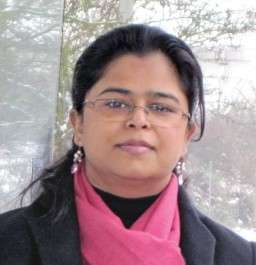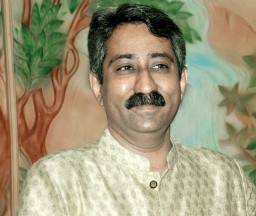
Till the early ’90s the export industry was fully dependent on the designs and forecasts which their buyers used to give, but as the market became tougher and buyers started getting more design-oriented, exporters started their own design developments to attract attention either by creating their own in-house teams or outsourcing the designs from professional studios. While those studios that catered to garments flourished, many specific to textiles and home furnishing faced closures. Apparel Online talks to the owners of two design studios, specific to textiles – Vaishali Sinha, Managing Director, Vaishali Design Studio and Nirmal Doshi, Managing Director, Textile Trendsetters, both based in Mumbai, to get an insight about their business and services offered.
Though Vaishali is based in Mumbai, her studio is in Noida which has around 20 people, seven designers and rest for presentation and documentation. It is doing well and is popular among both home furnishing exporters and garment exporters who want to develop fabric designs. “We work on an assembly line system, where everyone in the team has a specific responsibility. Designers stick purely to design; they do not do artwork, presentation or documentation. The client briefs me with their requirement and I hand it over to my design team to work on; once the design is done and approved by the client at the CAD stage then it is given to the artists to make the final artwork in higher resolution and then all those details go to the documentation team which furnishes the details of the fabric development whether it’s print or woven or embroidery. They put it altogether on a layout and that is handed over to the client,” shares Vaishali who founded her own Design Studio in 1997 in Noida and after getting married in 2003, settled in Mumbai. “I was so well established at that time that I didn’t want to replicate anything in Mumbai. It’s easier for me to do up and down rather than shifting the whole base to Mumbai and creating a new team,” she reasons.

The setup in Noida is a sampling unit but not for weaving, which requires a bigger space although there is a sample handloom which is not used often and only a few fabric samples are made on it. “We do textile designing; it could be jacquard or a dobby fabric, printed fabrics, we also do woven rugs and bath mats…, we do everything which needs weaves, print and ornamentation. We work with printers and dyers to print or dye a fabric and also help our clients for product displays, if they ask us to do so,” informs Vaishali.
Another design studio, Textile Trendsetters, renders much more comprehensive services to its clients; besides CAD CAM, it provides sampling on spinning and weaving. “We have our own weaving setup with shuttleless and handlooms for production and sampling; we can weave up to 100 metres of fabric for sampling. Besides that we are consulting with yarn manufacturing companies also, so that we get developed right from the beginning whatever we have in mind,” avers Nirmal, a textile technologist who works with four designers at his Studio in Mumbai.
When Vaishali started her career, design was not so strong in India, but she entered at the right time when the trend was just developing. “During 1997-98, suddenly the design boom came into India and the exporters

started doing developments on their own and I got into freelance designing. Since, I had worked with two design houses, work started coming to me by word of mouth. That time I was like God to them; whatever I gave them they would take it…, there were no questions and they never asked for options. If they asked for 10 designs, I would give them 10 and they approved all,” Vaishali shares nostalgically. Now the situation is much more demanding.
With customers asking for options, both design studios do their product developments based on season, client sales area, trends forecasts books, websites like pintrest.com and modaitalia.com and visit acclaimed international forecast fairs like Texworld, Prèmier Vision, Heimtextil, to mention a few. “We refer to a lot of forecast websites and books as they go to all the fairs worldwide and create comprehensive data along with pictures. We also do a lot of online surfing and travelling, besides visiting the major fairs to get a combined input from all the sources to create our own collection,” shares Nirmal. They both agree that it is extremely difficult to create a pro-type suitable for all markets, as each country is distinct in its taste. “Scandinavia is altogether different, US is totally different, and within Europe all the countries are different,” points out Vaishali who works both the ways – by offering her own developments to the clients and also on briefs from their buyers.
One of the biggest challenges of running a design studio is the confidentiality of designs. “A lot of times the clients express apprehension of design exclusivity and the fear of US using their information/inputs. Many a times our clients don’t even share their buyers’ name, which is not very wise and if they give the clients name it is much easier for us to develop the designs. They do not understand that if I misuse their information, then that’s suicidal for me; I shall lose my integrity as a design studio. More than my clients, it’s my necessity to keep the secrecy,” argues Nirmal.
Many exporters who have their own in-house product development setup also rely on outsourced collections, for the variety they can offer. “Many of my clients have in-house design teams but still they prefer working with us as they know that I am dealing with 15 other people so the information which I have is way more than their team. Also, the clients know that once they brief me, they don’t need to guide me all the time.
Moreover, the company’s in-house team gets tied up with servicing the buyers requirements rather than focusing on developments,” observes Vaishali who has over 60 clients, some of whom are Amravathi Exports, P. Parasamy, Premier Exports, Danish Textiles, Metro Exports – all based in Karur – and others such as Linen Scape, Saboo International, Sapna Polymedia, Indo Count, Indo-Tex, Varda Exports, Albert & Franker, Adarsh Fabric along with being registered design agency for Bharti Walmart and Joan Fabric (US) through Li & Fung are also her clients.
Payment terms of both the Design Studios vary. While Textile Trendsetters works only on 100% advance, Vaishali does offer some concessions. “Our terms are Rs. 1,000 per metre and minimum 100 metre per design per colour. For handlooms we charge Rs. 1,000 for 10” x 10” finished swatch,” informs Nirmal who has Birla Cellulose as one of his esteemed clients. In the case of Vaishali, the design payment comes completely in advance and the sample payment after the delivery of the sample. “If a project is small and takes less than a month then we take 100% advance. And with absolutely new clients who are not comfortable with 100% advance, we take 50% advance and 50% before we handover the artworks. In case of long-term projects for 2-3 months, then we divide the whole payment into instalments and the money comes to us in advance of each instalment,” concludes Vaishali.

Post a Comment